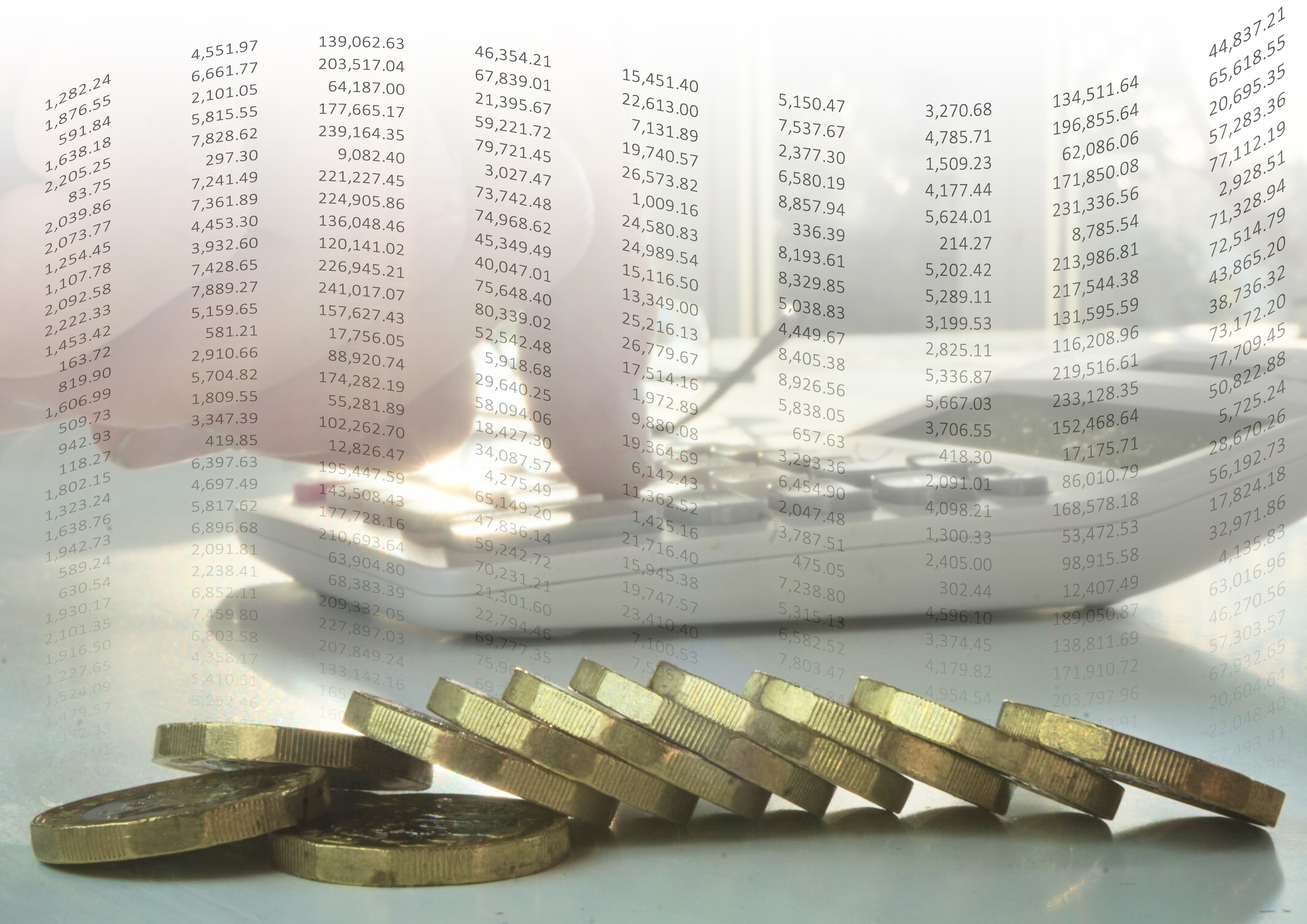What is capital gains tax and how does it work?
The government raked in £13 billion from capital gains tax in 2024/25. But how does the tax work, and when do you pay it?


Katie Williams
Capital gains tax (CGT) is a tax paid on profits from the sale of assets, such as shares, property and other investments.
It’s a tax that investors and property owners increasingly need to watch out for, due to the tax-free allowance being slashed in recent years, and the fact that chancellor Rachel Reeves increased CGT rates in the Autumn Budget.
The tax-free allowance on capital gains was reduced from £12,300 to £6,000 in April 2023, and slashed again to just £3,000 in April 2024.
MoneyWeek
Subscribe to MoneyWeek today and get your first six magazine issues absolutely FREE

Sign up to Money Morning
Don't miss the latest investment and personal finances news, market analysis, plus money-saving tips with our free twice-daily newsletter
Don't miss the latest investment and personal finances news, market analysis, plus money-saving tips with our free twice-daily newsletter
Along with frozen income tax thresholds, the shrinking CGT allowance means investors need to take extra care to shield themselves from a potential tax bill.
According to the latest figures from HMRC, CGT receipts hit £399 million in March 2025, bringing the 2024/25 tax year’s total to £13 billion.
Against this backdrop, we take a closer look at the tax. What is capital gains tax, when do you pay it, and how can you reduce the amount you owe?
What are the capital gains tax rates in the UK?
The CGT rate you pay in the UK depends on your income tax band and when you realised the gain.
The main capital gains tax rate
From 30 October 2024, basic-rate taxpayers pay 18% on gains, while higher and additional-rate taxpayers pay 24%. These new rates were announced in last year’s Autumn Budget and kicked in immediately. They have continued into the 2025/26 tax year.
Prior to 30 October, the rates were 10% for basic-rate taxpayers and 20% for higher and additional-rate taxpayers.
Capital gains tax rates on residential property
Reeves did not change the CGT rates for residential property in the Autumn Budget, so these remain at 18% and 24% for basic-rate and higher/additional-rate payers respectively. This means the main rates and the residential property rates are now the same. You do not have to pay CGT on your primary residence, but you will be charged on second homes like holiday homes and buy-to-lets.
The above rates only apply to the portion of your gains that exceed the tax-free allowance, known as your annual exempt amount, which is set at £3,000 for the 2025-26 tax year. So, you only pay CGT on gains above this threshold.
Sean McCann, chartered financial planner at NFU Mutual, says: “A growing number of people are finding themselves caught in the capital gains net when they sell or give away shares, property, or other taxable assets.
“This is having a significant impact on many shareholders who realise modest gains each year to enhance their income who are finding themselves with a tax bill.”
| Row 0 - Cell 0 | Residential property | All other chargeable assets |
Basic-rate taxpayers | 18% | 18% |
Higher-rate and additional-rate taxpayers | 24% | 24% |
When do you pay capital gains tax?
CGT may be due when you sell an asset for a profit, such as shares held outside an ISA wrapper or a buy-to-let property. But capital gains tax isn't payable on your main residence, so you don't pay this tax when you sell your home.
You can also trigger a CGT bill when giving an asset away to anyone other than a spouse or civil partner. The gain it has made since you bought it will normally be assessed for capital gains tax purposes. If you give away assets with gains of more than £3,000, there will usually be tax to pay.
Some people hope to get around capital gains tax by selling something for less than it's worth, such as a second property. However, in these circumstances, CGT will be due on the gain made based on the full market value, according to the investment platform Hargreaves Lansdown.
Selling something for a profit on a website like eBay or Vinted could also be liable for CGT. Hargreaves Lansdown points out that if you sell something worth £6,000 or more and make a gain of more than £3,000, you may have to pay capital gains tax. This includes things like jewellery, paintings and antiques. It also includes sets of things, which will be valued together if they’re sold to the same person. However, it doesn’t usually include cars or things with a limited lifespan like clocks.
Crypto investors should also watch out for a potential CGT bill, as selling or spending it (when the value has increased) is classed as a capital gain.
The amount of tax you pay depends on your income tax bracket. It’s important to keep records of your transactions so you can calculate any capital gains tax owed when filing your annual self-assessment tax return.
How to calculate capital gains tax
To calculate your CGT liability, first work out your taxable gain by subtracting the price you bought the asset from the sale price. Then, deduct your CGT allowance (£3,000 for the 2025/26 tax year) from this gain. The remaining amount may be subject to CGT at the rate based on your tax band and the asset type. For more detailed guidance on calculating CGT, visit the government website at gov.uk.
For example, let’s say you’re a higher-rate taxpayer and you made a £10,000 gain from selling shares this week. In this scenario, you’d pay £1,680 in CGT on your gains (24% of £7,000), after deducting your £3,000 annual tax-free allowance.
What are the CGT exemptions?
There are a number of CGT exemptions, in addition to your main residence and annual allowance.
One is the ability to transfer assets to your spouse or civil partner without being subject to this tax. This effectively allows you to gift assets to your partner to double your CGT allowance if both partners use their individual allowances.
Another important exemption applies to investments held within individual savings accounts (ISAs) and pensions. These investment wrappers are designed to be tax-efficient, so any gains made within them are exempt from CGT.
Charitable donations of assets such as shares or property are also exempt from CGT, offering a way to support causes you care about while potentially reducing your tax bill.
CGT is not payable on personal belongings (“chattels”), such as jewellery, where the sale proceeds are less than £6,000. McCann says: “Other exempt assets include gilts, foreign currency held for your use, and private motor cars including vintage passenger cars’’.
How can you reduce your capital gains tax bill?
You can reduce your CGT bill in several ways:
Gifting assets to your spouse or civil partner
As mentioned, asset transfers between partners are exempt from CGT. If you jointly own an asset, such as a second property, you can combine your allowances. This can maximise your tax-free capital gains tax allowance, particularly if the partner with the lower tax rate sells the assets.
Investing in ISAs and pensions
Another way to reduce CGT is by using ISAs and pensions. Gains made within these tax-efficient wrappers are exempt from CGT, allowing you to shelter a significant portion of your investments from the tax on future sales.
Use "bed and ISA"
Moving investments into an ISA protects future gains and dividends from tax. The process, known as “bed and ISA”, involves selling assets and immediately repurchasing them within an ISA. This allows you to crystallise gains up to your annual CGT allowance and then protect any future growth from CGT.
Sarah Coles, head of personal finance at Hargreaves Lansdown, explains: “If you’re sitting on gains on investments outside stocks and shares ISAs, it can make a great deal of sense to realise gains within your tax-free allowance each year.
“At the same time, you can also use share exchange (or Bed and ISA) to move those assets into a stocks and shares ISA, to protect them from CGT in future.”
Offsetting losses against gains
Capital losses can be used to offset capital gains. Myron Jobson, senior personal finance analyst at Interactive Investor, says: “If you have investments that have incurred losses, you can use these losses to offset gains realised on other investments, thereby reducing your overall tax liability.”
Make sure you register any losses with HMRC within four years after the end of the tax year in which the sale occurred.
Staggering asset sales
Another way to manage your CGT bill is by staggering the sale of profitable assets over several tax years.
By selling portions of your investments in different tax years, you can make the most of several years' worth of CGT allowances.
Jobson says: “Like the ISA allowance, CGT and dividend allowances work on a ‘use it or lose it basis’. As such, an option for those facing a tax bill is to delay capital gains by spreading them across two tax years. Theoretically, they could sell half their position on 5 April and sell the other half on 6 April – the start of the new tax year.”
Invest in an EIS (Enterprise Investment Scheme)
Wealthy investors making gains on investments in an EIS (Enterprise Investment Scheme) can benefit from generous tax reliefs.
Investments in an EIS are free from CGT if held for three years or more. You can also delay CGT if you sell EIS investments within three years but invest the proceeds into another qualifying scheme.
However, note that EISs are risky as they invest in small companies, so it’s not advisable to invest purely for the tax breaks alone.
Get the latest financial news, insights and expert analysis from our award-winning MoneyWeek team, to help you understand what really matters when it comes to your finances.

Ruth is an award-winning financial journalist with more than 15 years' experience of working on national newspapers, websites and specialist magazines.
She is passionate about helping people feel more confident about their finances. She was previously editor of Times Money Mentor, and prior to that was deputy Money editor at The Sunday Times.
A multi-award winning journalist, Ruth started her career on a pensions magazine at the FT Group, and has also worked at Money Observer and Money Advice Service.
Outside of work, she is a mum to two young children, while also serving as a magistrate and an NHS volunteer.
-
 Millions at risk of 'unnecessary' tax bill – how to shield your savings
Millions at risk of 'unnecessary' tax bill – how to shield your savingsMillions of Brits could be taxed on their savings interest this year as their savings interest exceeds the personal savings allowance. Are you at risk?
-
 Savers will have to wait as long as 48 years to build a £1m cash ISA pot if allowance is cut
Savers will have to wait as long as 48 years to build a £1m cash ISA pot if allowance is cutChancellor Rachel Reeves is rumoured to be planning a cut to the cash ISA allowance in the Autumn Budget, making it harder for savers to build wealth. Will you still be able to build a £1 million cash ISA pot?
